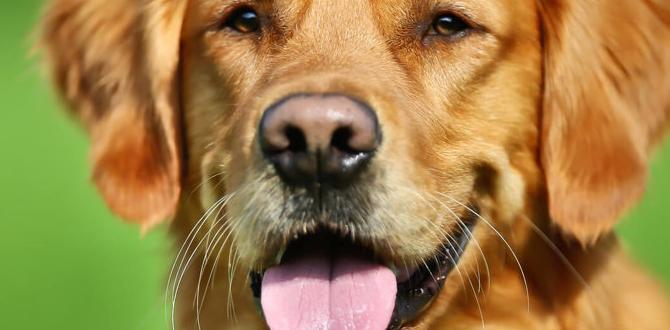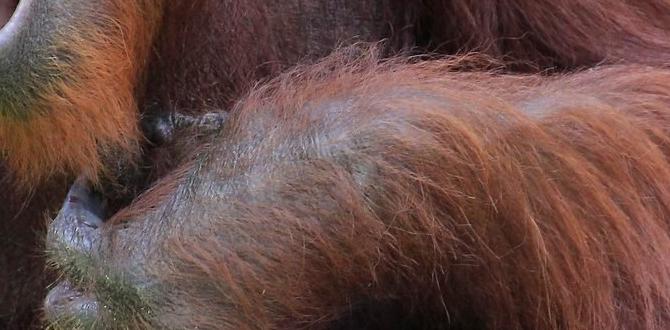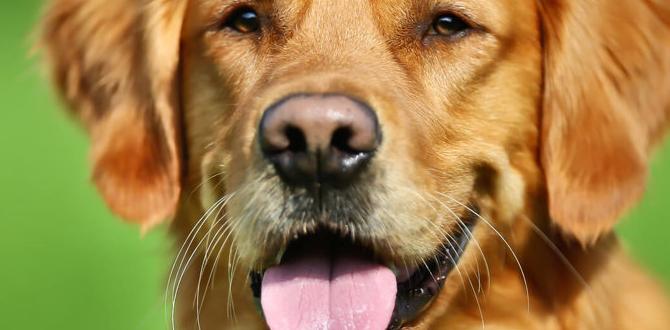Separation anxiety in dogs can be managed naturally with patience and consistent training. This guide offers effortless solutions focusing on desensitization, enrichment, and creating a secure environment, helping your furry friend feel calmer when you’re away.
It’s tough when your dog gets distressed every time you leave the house. Whining, barking, destructive behavior, or even accidents can signal separation anxiety. It’s a common challenge, but you’re not alone, and there are gentle, natural ways to help your dog feel more at ease. We’ll walk through simple steps that build confidence and reduce worry for both you and your pup.
Understanding Separation Anxiety in Dogs Naturally
Separation anxiety in dogs is more than just a bit of fuss when you walk towards the door. It’s a genuine distress response when a dog perceives they are being left alone or separated from a specific person or group of people to whom they are attached. This can manifest in many ways, from mild discomfort to full-blown panic.
As a dog owner, spotting the signs is the first step towards helping your furry friend. It’s crucial to understand that this isn’t about your dog being “naughty” or “malicious.” They are experiencing genuine fear and stress. Fortunately, many effective, natural strategies can help alleviate these feelings without harsh methods.
Common Signs of Separation Anxiety
Recognizing the symptoms is key to providing the right support. These signs typically occur only when you are gone or preparing to leave:
- Excessive barking, howling, or whining
- Destructive chewing, digging, or scratching, often at exit points like doors and windows
- Urination or defecation inside the house, even in house-trained dogs
- Pacing or restlessness
- Excessive drooling or panting
- Attempting to escape confinement
- Becoming overly excited or clingy when you are home
- Refusing to eat or drink when left alone
Is it Separation Anxiety or Something Else?
It’s important to differentiate true separation anxiety from other behavioral issues or medical conditions. For instance, a dog might urinate in the house due to a urinary tract infection, or destructive chewing could be a sign of boredom or insufficient exercise. Consulting with your veterinarian is the first and most critical step if you suspect separation anxiety. They can rule out any underlying health problems or offer initial guidance. The American Veterinary Medical Association (AVMA) offers great resources on identifying and addressing behavioral issues in pets, including the importance of veterinary consultation.
Once medical issues are ruled out, we can focus on behavioral strategies. The goal is to help your dog feel secure and comfortable, even when they are by themselves.
Effortless Solutions: Step-by-Step Guide
Helping your dog overcome separation anxiety naturally involves a multi-faceted approach. It requires patience, consistency, and a positive attitude. Think of it as building your dog’s confidence brick by brick. We’ll focus on gradual desensitization, environmental enrichment, and promoting independence.
Step 1: Desensitize Your Dog to Departure Cues
Dogs are smart and learn to associate certain actions with your departure. These “departure cues” can send them into a panic before you even leave. The trick is to perform these actions frequently without actually leaving.
How to do it:
- Pick up your keys: Do this several times a day. Pick them up, jingle them, put them back down. Don’t leave.
- Put on your coat: Wear your coat around the house for a few minutes, then take it off.
- Grab your bag: Pack your bag or purse, then unpack it.
- Walk to the door: Go to the door, touch the doorknob, open the door, and then walk away.
The goal here is to make these actions mundane, so your dog no longer sees them as a signal that you’re about to leave them alone. Over time, your dog will stop reacting anxiously to these cues because they no longer predict your departure.
Step 2: Practice Short, Gradual Departures
Once your dog is less reactive to departure cues, you can start practicing very short absences. The key is to keep these absences so short that your dog doesn’t have time to become anxious.
How to do it:
- Start super short: Leave for just 30 seconds to 1 minute. Walk out the door, close it, and immediately come back in.
- Be calm upon return: When you return, don’t make a big fuss. Greet your dog calmly, as if you’ve only been gone for a moment. Overly enthusiastic greetings can increase a dog’s anxiety.
- Gradually increase time: Slowly extend the duration of your absences. Go from 1 minute to 2 minutes, then 5 minutes, 10 minutes, and so on.
- Monitor your dog: Use a pet camera or ask a neighbor to watch your dog. If you see signs of distress, you’ve gone too long. Go back to a shorter duration that your dog handled well and try again later.
- Vary the times: Don’t always leave for the same amount of time and always return. Vary your departure and return times to keep your dog from anticipating your return.
This gradual process helps build your dog’s confidence and teaches them that you always come back, and that being alone isn’t a scary experience.
Step 3: Create a Safe and Enriching Environment
Your dog’s environment plays a significant role in their comfort and security when you’re away. Making their space a place they enjoy and feel safe can significantly reduce anxiety.
Create a “Den” Space:
- Provide a comfortable crate or a designated bed in a quiet area.
- Make it cozy with familiar blankets and toys.
- Ensure the space is safe and they can’t injure themselves.
- Never use the crate as punishment. It should be a positive, secure retreat.
Puzzle Toys and Food Dispensing Toys:
- Leave out engaging toys that dispense treats or food when manipulated. These toys can keep your dog occupied and mentally stimulated, redirecting their focus from anxiety to problem-solving.
- Examples include Kongs stuffed with peanut butter (ensure it’s xylitol-free!), frozen yogurt, or kibble, or interactive treat-dispensing balls.
Background Noise:
- Some dogs find comfort in gentle background noise. Classical music or leaving a TV or radio on at a low volume can help mask external sounds that might trigger anxiety, such as unexpected noises outside.
- There are also specific calming playlists designed for dogs available on platforms like YouTube or Spotify.
For more on creating a stimulating environment, the ASPCA has excellent advice on enrichment activities for dogs.
Step 4: Promote Independence During Your Time Together
Often, separation anxiety stems from an over-reliance on their owner. Encouraging independence even when you’re home can help your dog feel more secure on their own.
Don’t Make Greetings or Farewells a Big Deal:
- When you leave or return, keep your interactions calm and low-key. Avoid overly excited greetings or prolonged, emotional goodbyes. This helps normalize your comings and goings.
Train “Place” or “Mat” Commands:
- Teach your dog to go to a specific mat or bed and stay there. Reward them for staying calm and relaxed on their mat, even when you’re nearby. This reinforces that they can relax independently.
Independent Play:
- Encourage your dog to play with toys on their own. Don’t always be the initiator of play. If they bring you a toy, reward them, but also try to engage them with toys that they can enjoy by themselves.
Step 5: Exercise and Mental Stimulation
A tired dog is a happy dog, and often, a less anxious dog too! Ensure your dog is getting enough physical and mental exercise throughout the day. This helps burn off excess energy that might otherwise manifest as anxious behaviors.
Physical Exercise:
- Regular walks, runs, and playtime contribute to a dog’s overall well-being. Tailor the exercise to your dog’s breed, age, and health.
- A good brisk walk before you leave can help them settle down afterward.
Mental Stimulation:
- Beyond puzzle toys, incorporate training sessions, scent games, or learning new tricks. Mental exercise can be just as tiring as physical exercise.
- For example, hide treats around the house and let your dog sniff them out, or play a game of “find it.”
The Dogington Post offers valuable insights into the importance of exercise and mental stimulation for a well-adjusted dog.
Step 6: Consider Calming Aids (Natural Options)
While not a standalone solution, natural calming aids can complement training efforts for some dogs.
Pheromone Diffusers:
These mimic natural maternal pheromones that have a calming effect on dogs. They can help create a sense of security. Brands like Adaptil are widely available.
These apply gentle, constant pressure, which can have a calming effect on some dogs, similar to swaddling an infant.
It’s crucial to approach these aids as complementary tools, not replacements for behavioral modification and training.
Important Considerations for Success
Implementing these strategies takes time and dedication. Here are a few things to keep in mind:
| Aspect | Key Focus | Why It Matters |
|---|---|---|
| Patience | Progress is often slow. Don’t get discouraged by setbacks. | Dogs learn at their own pace. Rushing can increase anxiety. |
| Consistency | Stick to the training plan daily, even on weekends. | Predictability helps dogs feel secure. Inconsistency can confuse them. |
| Observation | Watch your dog’s body language closely. | Learn to recognize their stress signals to avoid pushing them too far. |
| Positive Reinforcement | Reward calm behavior with praise or treats. | Builds positive associations and encourages desired actions. |
| Veterinary Consultation | Always consult your vet first. | 2019American Veterinary Society of Animal Behavior (AVSAB) position statement on Humane Dog Training emphasizes positive reinforcement and the importance of ruling out medical causes. |
When to Seek Professional Help
While natural methods are highly effective, some cases of separation anxiety can be severe and may require professional intervention. If you’ve been consistently applying these techniques for several weeks and aren’t seeing improvement, or if your dog’s anxiety is causing significant distress or dangerous behavior, it’s time to seek expert help.
A certified professional dog trainer (CPDT-KA or CPDT-KSA), a veterinary behaviorist (DACVB), or a certified applied animal behaviorist (CAAB from the Animal Behavior Society) can provide a personalized plan tailored to your dog’s specific needs. They can assess the severity of the anxiety and offer advanced strategies or behavioral medication if necessary. The AVMA also provides a helpful resource for finding a qualified professional.
Frequently Asked Questions About Natural Separation Anxiety Solutions
Q1: How long does it take to overcome separation anxiety naturally?
A: This varies greatly depending on the severity of the anxiety and your dog’s individual personality. For mild cases, you might see improvements within a few weeks. For more severe cases, it can take several months of consistent effort. Patience is key!
Q2: Can I leave my dog alone for an entire workday if they have separation anxiety?
A: Typically, no, especially in the initial stages. You’ll need to gradually work up to longer absences. Consider doggy daycare, a trusted pet sitter, or a friend/family member to help break up the day as you train.
Q3: What if my dog is still anxious even with all these methods?
A: If you’ve diligently applied these natural solutions without significant progress, it’s crucial to consult a professional. Severe anxiety might require a more intensive behavior modification plan, potentially including medication prescribed by a veterinary behaviorist.
Q4: Are calming treats effective for separation anxiety?
A: Some calming treats, particularly those with natural ingredients like L-theanine or chamomile, can offer mild relief for some dogs when used in conjunction with training. However, they are rarely sufficient on their own for moderate to severe cases. Always check ingredients and consult your vet.
Q5: Should I get another dog to help my anxious dog?
A: This is generally not recommended as a solution for separation anxiety. Often, a dog’s anxiety is deeply rooted in their bond with their primary caregiver. A second dog may not alleviate their fear and could lead to new behavioral issues or added stress for both dogs.
Q6: My dog is destructive when I leave. How can natural methods help?
A: Natural methods focus on building confidence and reducing distress. Providing engaging enrichment toys (like puzzle feeders) can divert their attention and channel their energy positively. Gradual desensitization to your departures also teaches them that you going away isn’t a cause for panic, thus reducing the urge to be destructive.
Q7: Is it better to ignore my dog’s anxiety or comfort them?
A: It’s a delicate balance. You don’t want to reinforce* the anxious behavior by giving them excessive fuss when they’re anxious. However, completely ignoring a distressed dog isn’t kind. The best approach is to remain calm yourself, avoid overly emotional departures/greetings, and provide comfort through positive training and environmental enrichment that builds their confidence over time.
Conclusion
Dealing with separation anxiety shows how much you care about your dog’s well-being. By understanding its root causes and applying these natural, effortless solutions with consistency and love, you can help your furry companion feel secure and content, even when you’re not there. Remember to start small, celebrate every bit of progress, and don’t hesitate to seek professional guidance if needed. You’ve got this, and with your dedication, your dog will too!
Meet Elyse Colburn, the devoted canine companion and storyteller behind the enchanting world of “Tales, Tails, and Adventures Unleashed.” A passionate dog enthusiast with a heart full of paw prints, Elyse Colburn shares heartwarming tales and insightful adventures, celebrating the joy, loyalty, and endless antics that make every dog a true hero. Join Elyse Colburn on this tail-wagging journey, where every post is a love letter to our four-legged friends.






